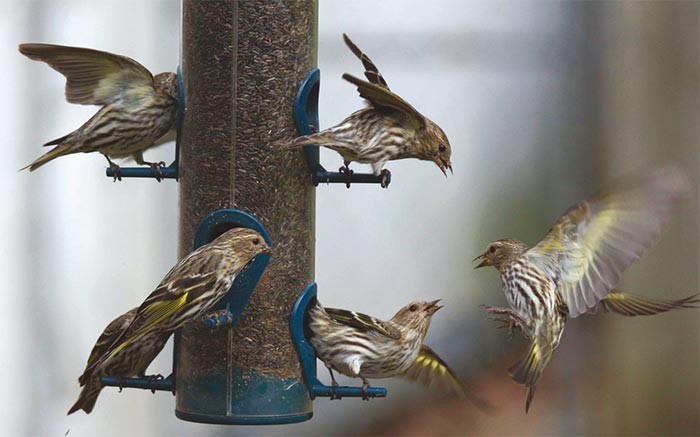
Birdwatchers in the Northeast have long known that some species of finch that spend most of their lives in the boreal forest occasionally travel far beyond their normal range. Pine siskins, red crossbills, common redpolls, and evening grosbeaks, among others, wander widely during some winters but remain in their usual northern habitat most other winters. The pattern of these irruptions, as they are called, is puzzling, and most explanations for the phenomenon point to food shortages. But now, a team of scientists has sorted out a complicated climate pattern that leads to these irruptions, one that could also make it possible to predict the events more than a year in advance.
According to atmospheric scientist Courtenay Strong of the University of Utah, regular shifts in temperature and rainfall in different parts of the country drive boom-and-bust cycles in seed production, which, in turn, trigger the movement of large numbers of seed-eating finches.
“Seed production depends in some way on climate, but it has been hard to piece the story together from climate to seeds to birds,” said Strong, who analyzed climate patterns, seed production, and records of bird sightings submitted to Cornell University’s citizen science program, Project Feederwatch. “But we’ve been able to uncover the climate variability patterns that drive seed production going back 23 years.”
Strong and his colleagues found that spring and summer weather conditions in a given year determine how prolific seed crops will be two or three years later.
He described it as a teeter-totter effect that occurs in north/south and east/west patterns. “When it’s warm and dry and favorable to seed production in western North America, it’s typically cool and wet in eastern North America. And the pattern shifts in the same way from north to south,” he explained. The east/west pattern alternates every two or three years, while the north/south pattern fluctuates just once a decade.
Based on Project Feederwatch’s two million records of pine siskin observations, irruptions of boreal finches occur in a similar pattern, with birds moving from north to south in some years and from east to west in other years. Strong said that irruptive species in the Northeast are affected by both directional patterns, resulting in more fluctuations in their movements than occurs in most other parts of the continent. By identifying the climatic factors that drive seed production in the boreal forest, Strong believes that he can predict the movements of irruptive bird species.
His next step is to examine how a changing climate will affect the teeter-tottering of seed production. He worries that the pattern may be disrupted, leaving birds without adequate food supplies in some years, regardless of where they travel. “Nearly half of all North American birds [species] breed in the boreal forest,” wrote Strong in the Proceedings of the National Academy of Sciences, “and as such, the periodicity of avian irruptions and their connection to climate likely represents a critical bellwether of how climate variability influences North American biota.”

